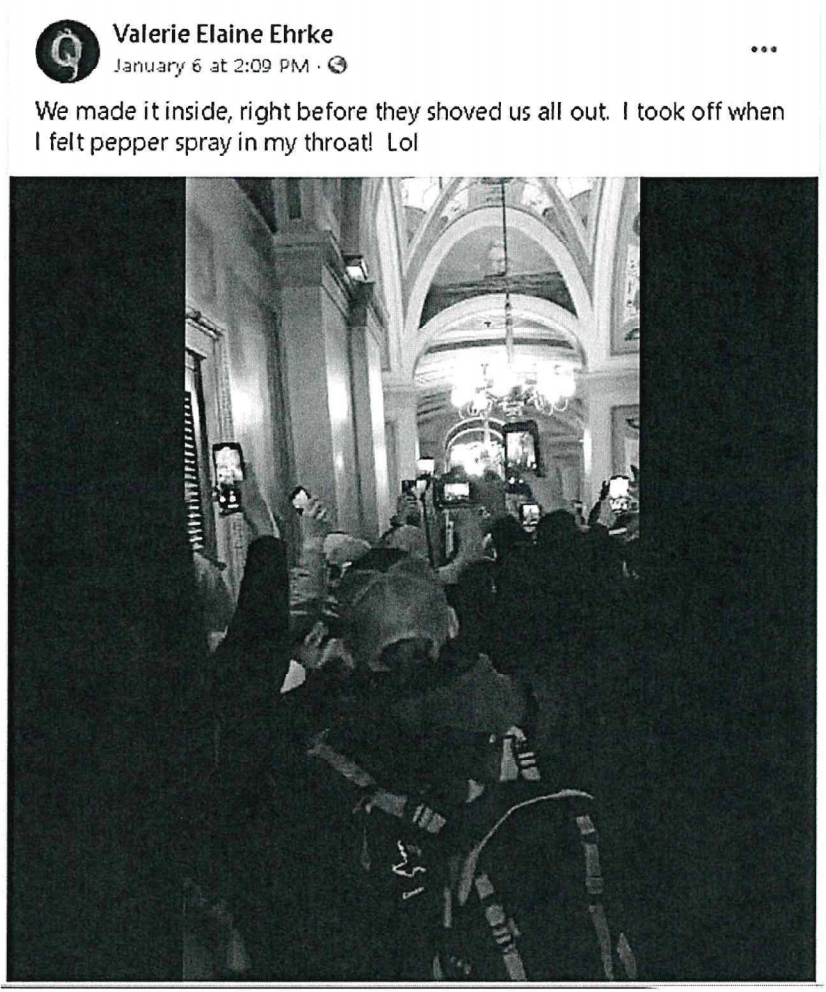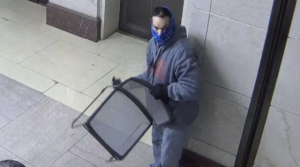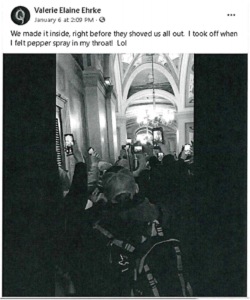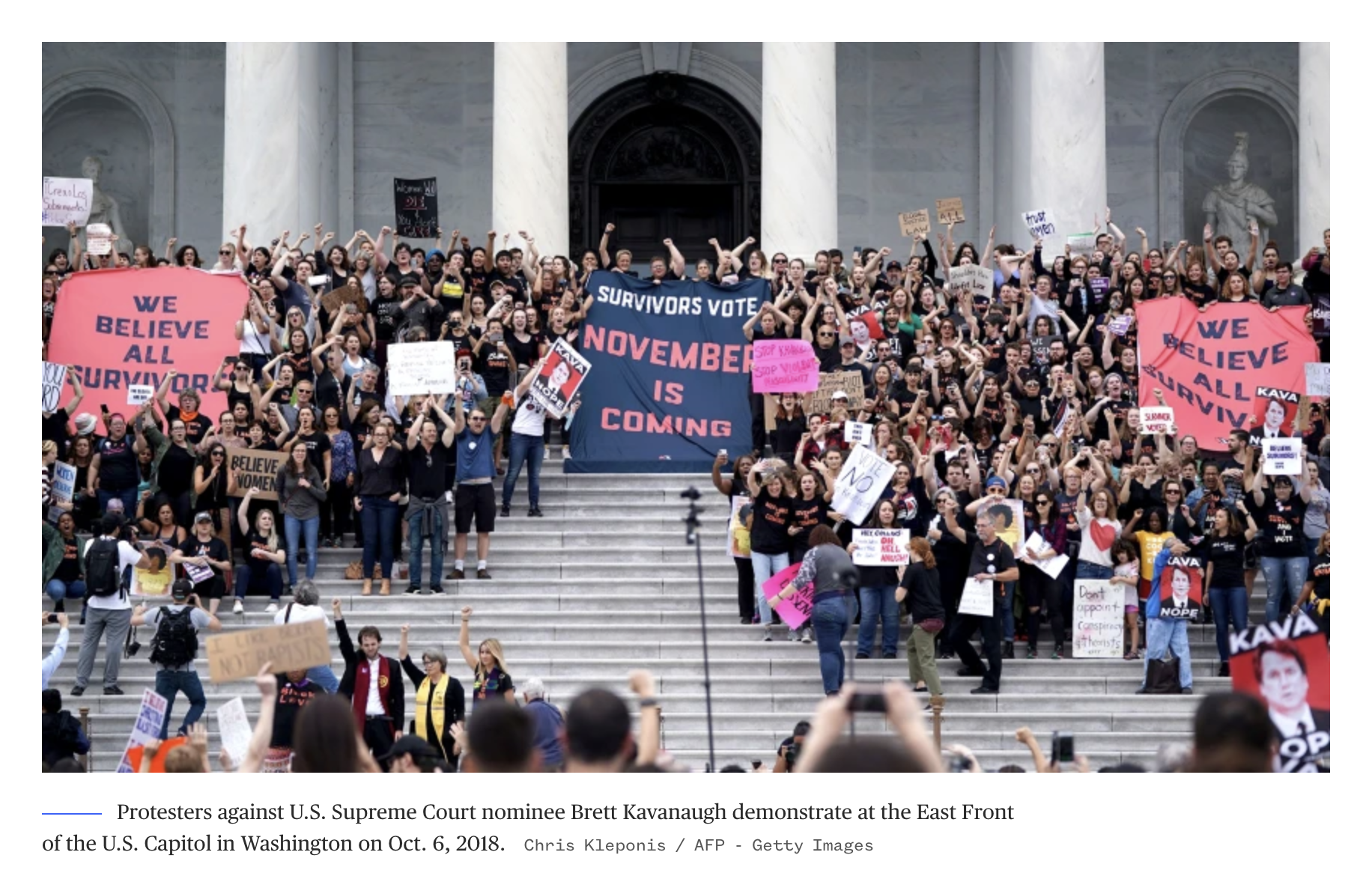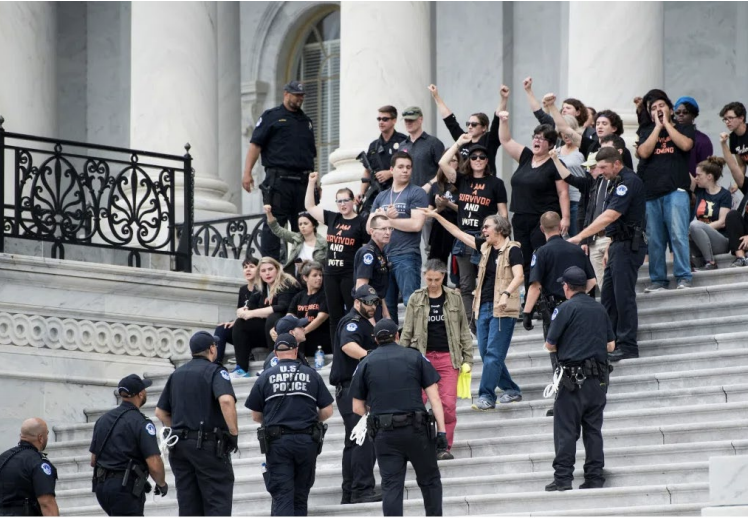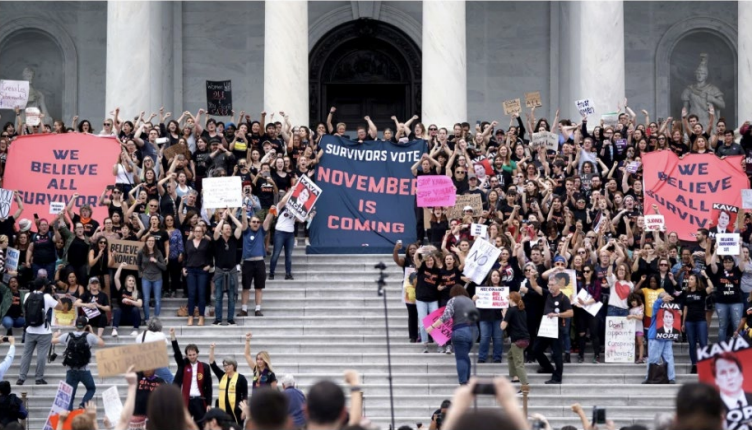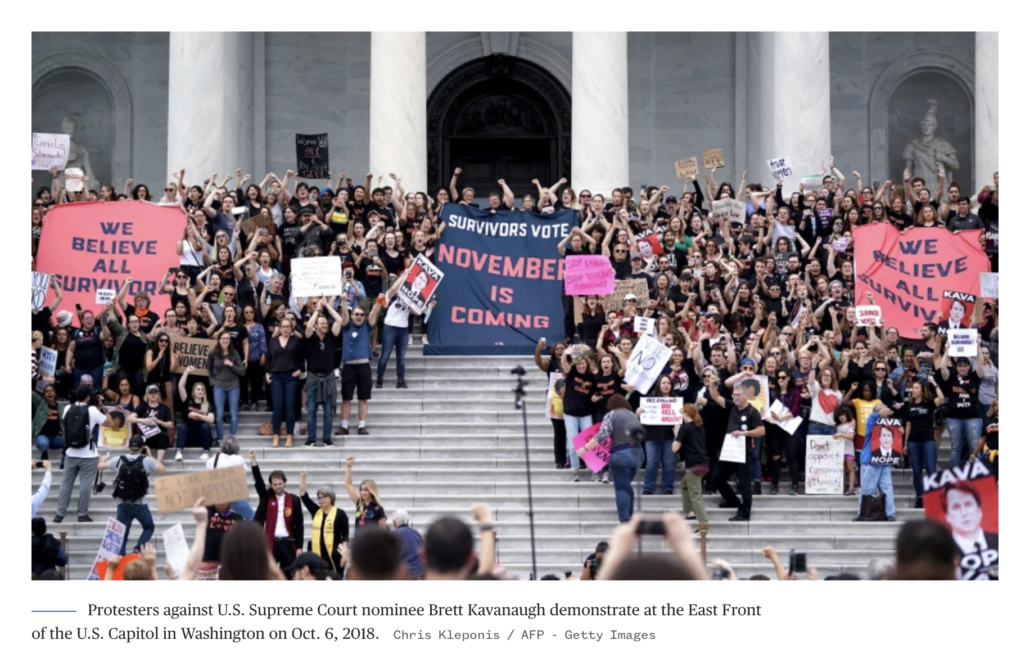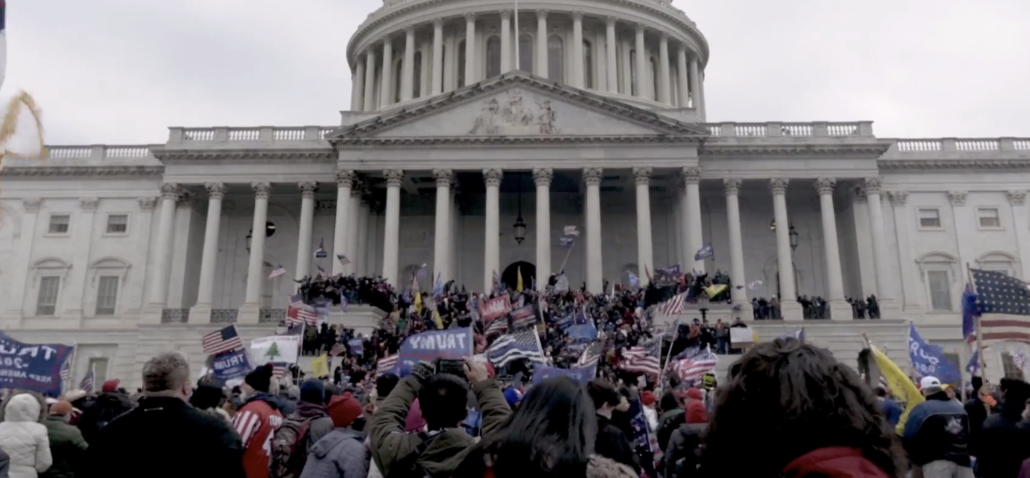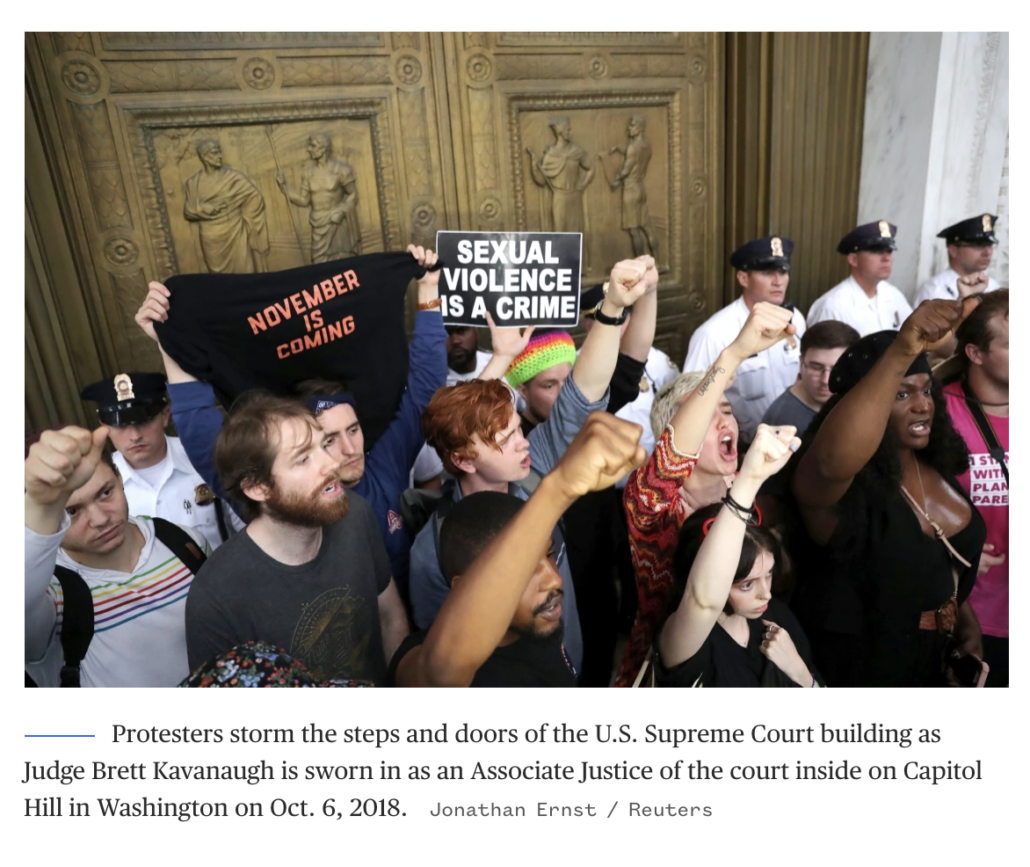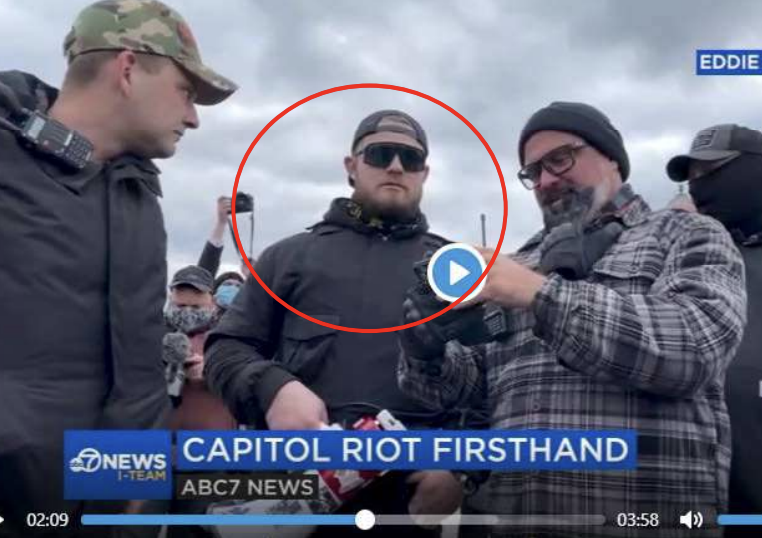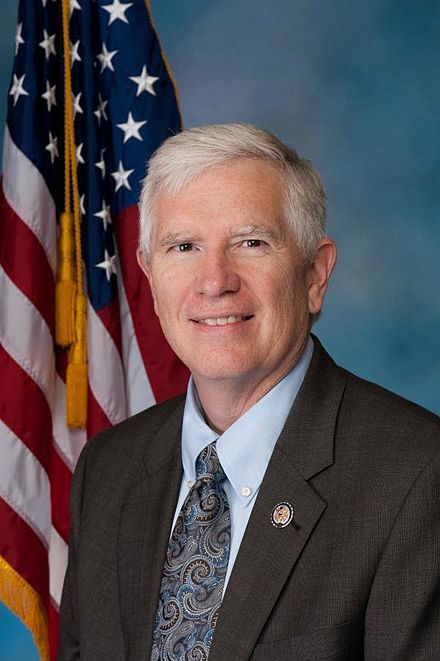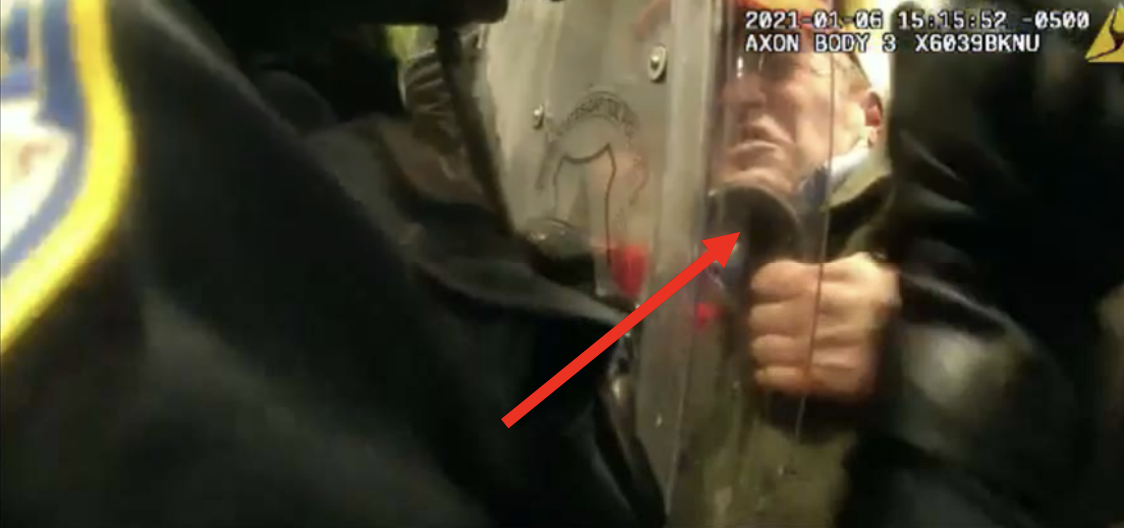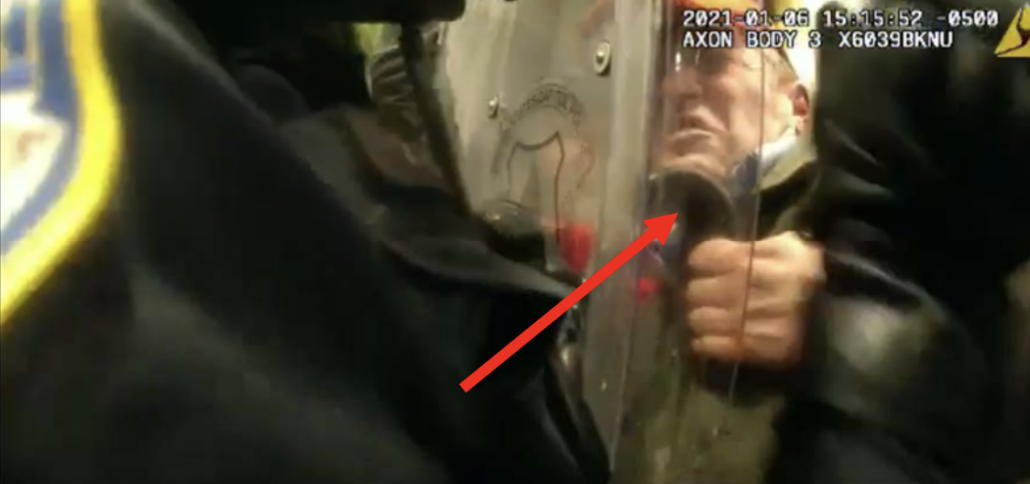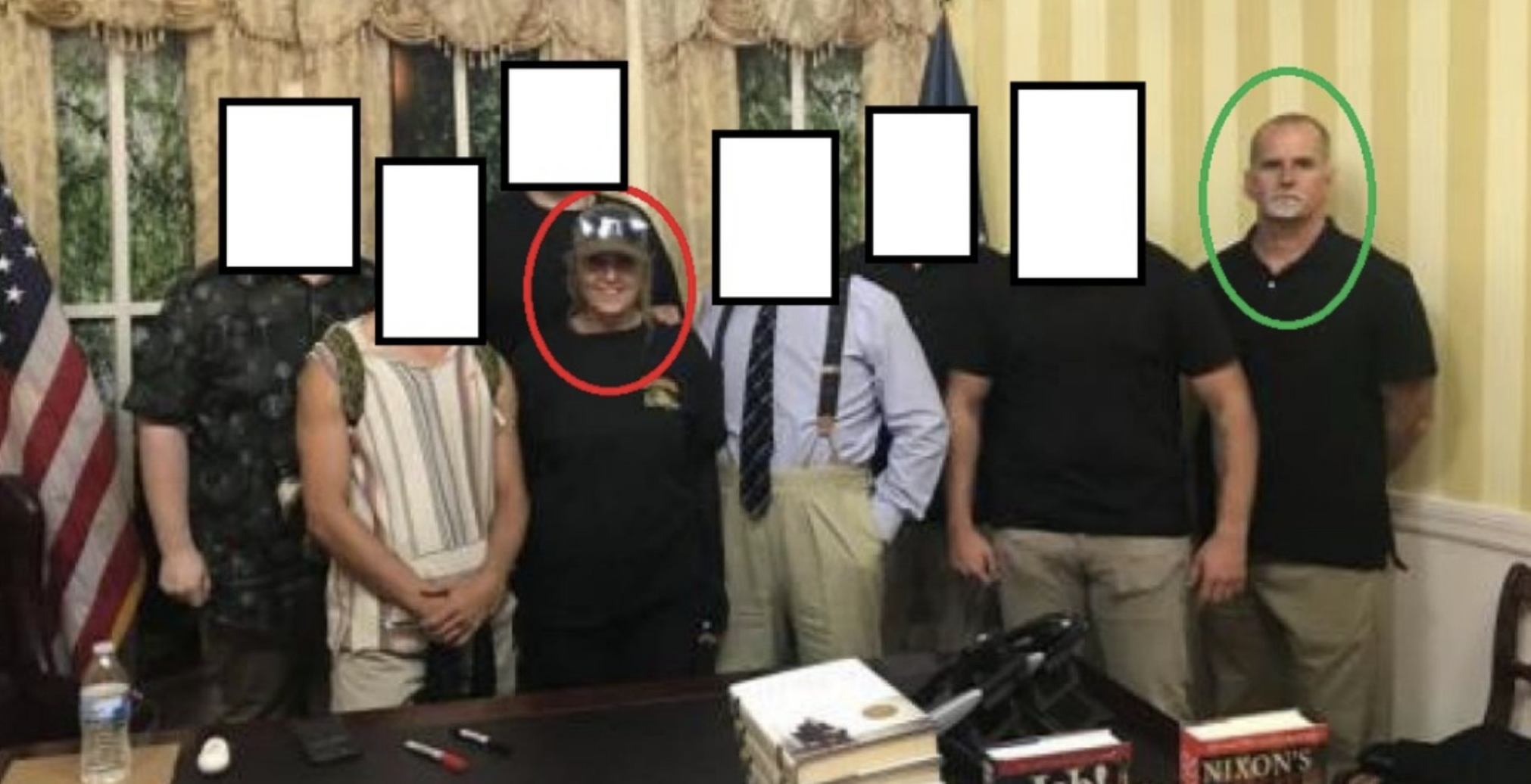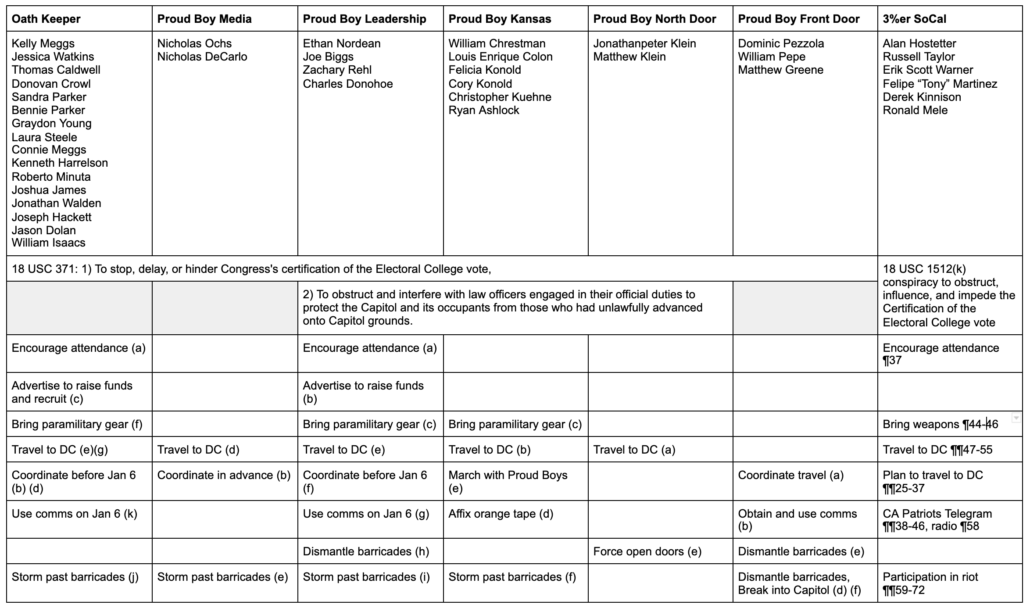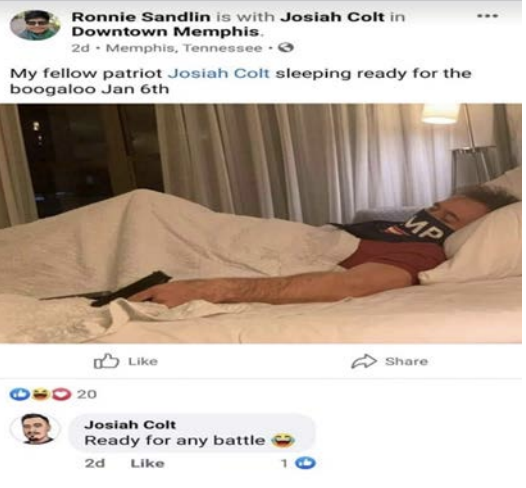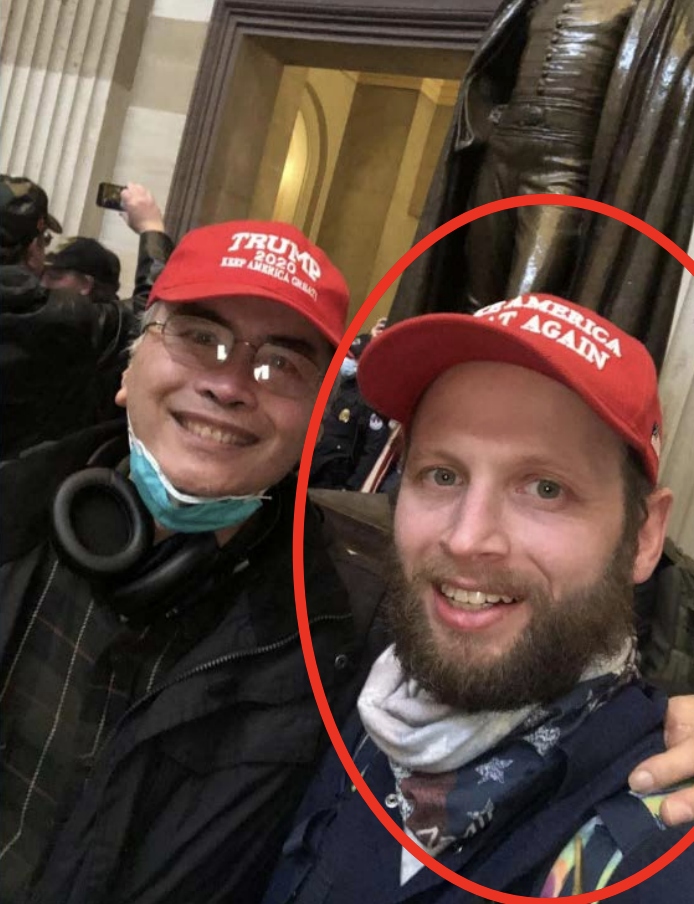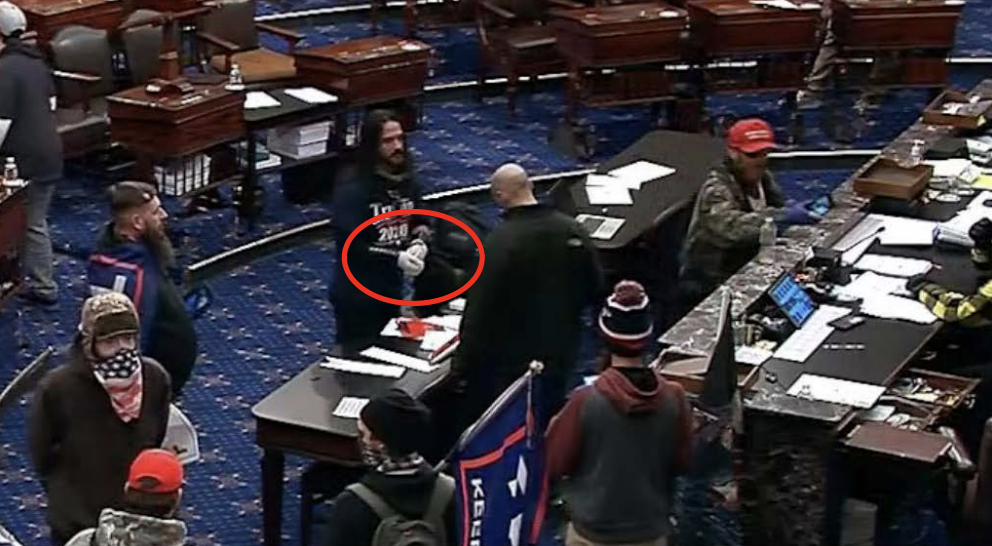January 6: The Trespasser Testimonials
The other day, when accepting her first misdemeanor January 6 plea, Chief Judge Beryl Howell expressed dismay that Jack Griffith was getting such a lenient plea for taking part in a violent mob that terrorized Congress and the Vice President. In response, his attorney Heather Shaner and the prosecutor Mitra Jafary-Hariri defended the deal, in part, by talking about how cooperative Griffith was. In response, Judge Howell distinguished simple cooperation from a cooperation deal, which requires extended work with prosecutors to indict others.
Howell is not wrong.
But this post has convinced me of something I already suspected: DOJ is using even misdemeanor plea deals to build their larger case. As I noted, the statement of offense to which Eliel Rosa pled guilty described that before he entered the Upper West Terrace door at 2:35PM and passed cops who had not put up much resistance to rioters, he had witnessed “people with megaphones shouting, ‘Go, Go, Go'” and smelled pepper spray which made it clear to him that “law enforcement was present and in front of the advancing group.” This sworn allocution will make it harder for people like Ethan Nordean to claim that, when he entered the same door minutes later, he had no way of knowing that he was trespassing.
Reviewing a good percentage of the misdemeanor pleas so far, it seems most provide one or another kind of support (or both) for the larger case. Some of the defendants pled to details about their own participation that will support the violence of the day. In addition to Rosa (whose testimony will be detrimental to Nordean and others who are claiming because guards didn’t resist he wasn’t trespassing), Kevin Gallagher’s statement of offense will probably be useful in prosecuting Jason Buteau. Some of the other statements of offense describe defendants witnessing other assaults or destruction.
The other way misdemeanor pleas likely will help prosecutors is in validating the video they took during the riot or other testimony such that it will more easily be entered into evidence against other defendants. I’ve long believed that the FBI is focusing some of their arrests of trespassers on those it believes have useful video against more dangerous rioters, and that’s true even of the handful who have pled guilty already. For example, Andrew Bennett’s video must be among the video evidence shared with defendants who broke open the window through which Ashli Babbitt tried to enter. Dona Bissey and Anna Morgan-Lloyd between them took a picture that shows several rioters who stole a sign from Nancy Pelosi’s office (and the government seems very interested in Bissey’s pictures of rioters on the scaffolding). For defendants with useful video, the government needs to ensure the video they collected can be validated to be used against other rioters. In some statements of offense, then, trespassers end up describing taking video and even (sometimes) that they took selfies as part of that video.
Trespassers witness the violence
After the police line and metal barricades were breached, IVEY walked towards the Senate Wing Door, where he watched another rioter break through the window immediately adjacent to the Senate Wing Door using a riot shield.
After the rally, the defendants marched to the U.S. Capitol building, where they entered the first floor at around 2:18 p.m. Cell phone video recorded by the defendants shows broken glass and alarms blaring as they entered. They were present in a first-floor corridor barricaded by law enforcement officers at approximately 2:31 p.m.
Danielle Nicole Doyle entered the U.S. Capitol building on January 6, 2021, at approximately 2:20 p.m., by climbing through a broken window located next to the Senate Wing Door.
Edward Hemenway and Robert Bauer:
8. On January 6, 2021, after the “Stop the Steal” rally, Robert Bauer and Edward Hemenway, who are cousins, followed a crowd to the U.S. Capitol. As Bauer and Hemenway entered the U.S. Capitol grounds, Hemenway saw a green plastic sign that said, “Do Not Enter,” but continued anyway. As they walked toward the U.S. Capitol building, they saw officers in S.W.A.T.-style gear standing near the scaffolding outside the building. Bauer and Hemenway linked-up with a group walking toward a door into the building. They entered the U.S. Capitol building together with the group at around 2:10 p.m. E.S.T. They then made their way into the Crypt. As they entered the Crypt, Hemenway believed members of the crowd were fighting with police officers.
9. While inside the U.S. Capitol, Bauer and Hemenway chanted, “Stop the Steal!” Bauer also took pictures and videos, and chanted, “Our house! Our house!”
JANCART and RAU watched from the West Lawn while rioters broke through the police line and rushed up the stairs of the Capitol. RAU video-taped that moment, stating on the video, “We made it up to the Capitol. … We have the police surrounded! We have you surrounded!” In the background, rioters can be heard yelling, “get him!” and “traitors gonna hang!” When the rioters broke through the police line, RAU can be heard screaming, “Yeah! They just pushed through the guards!”
JANCART and RAU then entered the Capitol Building through the Senate Door. JANCART and RAU then traveled through the Crypt. After exiting the Crypt, JANCART and RAU took the stairwell south of the Crypt to the second floor of the Capitol and walked towards the Speaker’s conference room. RAU stepped inside of the Speaker’s conference room while JANCART stayed outside and took a photo.
JANCART posted a photo of the door to the Speaker’s conference room to Facebook with the caption, “We’re in.”
Griffith attended the Stop the Steal rally and then walked to the U.S. Capitol. Griffith unlawfully entered the restricted Capitol grounds, arriving near the North West Scaffolding and Stairs at approximately 2:14 to 2:16 p.m. on January 6, 2021. Griffith spent time in the crowd by the inauguration stage on the west side of the U.S. Capitol building observing members of the crowd attacking law enforcement repeatedly as they tried to keep the crowd away from the building. Griffith then went up the northern set of stairs underneath the scaffolding to the north west terrace near the Senate wing of the building.
Griffith entered a door to the Capitol which had been broken open. Griffith entered the Capitol with his Co-Defendants Eric Chase Torrens and Matthew Bledsoe at approximately 2:18 p.m. The fourth Co-Defendant Blake Reed entered shortly behind Griffith, Torrens and Bledsoe. Griffith’s entrance is captured in surveillance footage and in a selfie-stye video that his Co-Defendant Matthew Bledsoe shared on social media. The selfie-style video shows them immediately outside of an exterior door of the Capitol. An alarm can be heard blaring in the background. Co-Defendant Torrens said, “We’re going in!” The camera then pans to Griffith who screamed in excitement.
Shortly after 2:30 p.m., video surveillance captured Curzio walking inside the Capitol Visitors Center (“CVC”), which is part of the Capitol building. Curzio and others gathered in a CVC corridor at the end of which U.S. Capitol Police officers had formed a defensive line. The officers issued commands for the rioters to leave the building. When rioters refused their commands, the officers began arresting individuals who had unlawfully entered the building, including Curzio. Curzio admitted he refused to leave the premises after being ordered to do so.
Curzio was compliant following his arrest, and later cooperated with law enforcement by providing the Federal Bureau of Investigation (“FBI”) his swipe code so the FBI could search his phone.
During the time relevant to the above described events, the defendant entered the U.S. Capitol and walked around the building. The defendant entered and walked around at least one conference room type-area and walked through various hallways. While doing so, the defendant told others not to take or destroy anything, and that they were probably going to get in trouble for what they were doing.
Shortly after 2:30 p.m., video surveillance captured Gallagher walking in the Capitol Visitors Center, which is part of the Capitol building. At one point, Gallagher appeared to admonish another rioter not to throw a chair.
The rioter in question is likely Jason Buteau, who threw a chair in CVC between 2:29 and 2:31, but the moment he actually threw the chair was not caught on camera.
Camper subsequently admitted to law enforcement that he “picked the right hole” to get himself to a stairway area. He saw that the police lines had been broken, as well as persons getting tear gassed and pushing to get inside the building. Camper stated that he believed he was in the frontline of the situation, and that “in my mind, we were going to take the Capitol steps.” Camper also admitted that he went inside the U.S. Capitol building.
Torrens spent time in the crowd by the inauguration stage on the west side of the U.S. Capitol building observing members of the crowd throwing items at law enforcement.
As Simon filmed the video he approached the doorway to the U.S. Capitol, law enforcement officers inside the U.S. Capitol could be seen attempting to remove individuals from the building. Broken glass windows could be observed on two of the doors of the U.S. Capitol, including one that was directly next to Mark Simon while he was taking the video.
Once Mark Simon was in the doorway of the U.S. Capitol building, he turned the camera on himself and said, “In the Capitol baby, yeah!” Shortly thereafter, Mark Simon turned the camera on himself again and said, “2021 Donald Trump!” A screenshot from the portion of the video in which Mark Simon turned the camera on himself is below, along with an image from the video provided to the FBI by a member of the public. A broken glass window is visible directly behind Mark Simon in the first image.
Then-Houston cop Tam Pham
The defendant walked over fences on the Capitol grounds that had been previously knocked over, and saw police officers as he approached the U.S. Capitol Building with a large crowd of people. He continued to walk past a broken or torn down fence, and he passed other barricades on his way to the U.S. Capitol Building
As SCIRICA approached the Capitol, he saw people on the steps and on the scaffolding outside of the Capitol. SCIRICA saw a large crowd in front of him, and he decided to push his way to the front to see what was happening. He watched as other individuals entered the Capitol. He decided that he want to see it for himself and see what was happening with his own eyes. He heard people yelling and shouting “U.S.A.” chants and “Stop the Steal.” He heard what he believed to be a window breaking. He also heard an alarm going off inside the Capitol. He decided to enter the Capitol any way.
SCIRICA entered the U.S. Capitol on January 6, 2021. He entered through a Senate wing door at approximately 2:24 p.m.
While inside the Capitol, SCIRICA walked through the Rotunda at approximately 2:26 p.m., and he walked through Statuary Hall at approximately 2:27 p.m. He took photos and videos as he proceeded through the Capitol.
While inside the Capitol, SCIRICA saw law enforcement officers inside, but he continued to walk around inside the Capitol. He also saw a man push a law enforcement officer while inside the Capitol.
Trespassers validate their own video
9. On January 6, 2021, Bennett made his way to the Capitol grounds and began livestreaming video to his Facebook page from outside the building at approximately 1:00 p.m. Bennett eventually unlawfully entered the Capitol along with hundreds of other individuals. At approximately 2:17 p.m., 2:37 p.m., and 2:42 p.m., Bennett livestreamed three videos from inside the building to his Facebook page. During one point in one of those videos, Bennett admonished others not to be destructive inside the Capitol. At multiple points, Bennett turned the camera on himself and captured himself inside the building, wearing a hat with the letters “FAFO,” an abbreviation of a slogan popular among the Proud Boys, a far-right group. There is no evidence Bennett was violent or destructive on the grounds of or inside the Capitol.
10. On January 11, 2021, the Federal Bureau of Investigation (“FBI”) obtained a search warrant for Bennett’s residence in Columbia, Maryland. During the execution of the warrant, the FBI recovered the hat bearing the “FAFO” slogan that Bennett wore inside the Capitol. Following the search, Bennett voluntarily interviewed with the FBI, and admitted that he unlawfully entered the Capitol on January 6, 2021. He also provided the unlock code of his cellphone to the FBI so FBI could search the device, and has been entirely cooperative with the government’s investigation since his arrest on January 26, 2021.
11. Upon further investigation, the FBI found while Bennett attempted to contact a Maryland chapter of the Proud Boys about becoming a member, it did not find evidence that Bennett is a member or associate of any organized chapter of the Proud Boys.
11. After arriving at the Capitol and ascending the steps, the DEFENDANT participated in the protest and took photos of the other protestors, including those in or around the scaffolding on the western front of the building.
12. The DEFENDANT and Morgan-Lloyd then entered the Capitol building and walked through a hallway. While inside the Capitol building, the DEFENDANT appeared in a photo with Morgan-Lloyd and two other individuals, one of whom is holding a Trump campaign flag. The DEFENDANT later posted the photo on Facebook with the caption “Inside the Capitol Building.” The DEFENDANT also posted a picture of an elderly woman with a “Make America Great Again” hat and wrote “This is Our Warrior Linda. We stayed with her and her daughter Stacey all day. They are somewhat locals. When we Marched to Capitol she said “I’m going in” and she lead the way. We went in [] This photo taken at Capitol entry right before[.]” The Defendant also posted a screenshot of a Twitter post which stated “This is the First time the U.S. Capitol had been breached since it was attacked by the British in 1814” and wrote “We were inside for reals! Linda led the way!! She is a True Patriot and Warrior!!!”
13. On January 7, 2021, the DEFENDANT posted a photo on Facebook, tagging Morgan-Lloyd and another individual, and wrote “We are home. Thank You to ALL that messaged checking in and concerned. It was a day I’ll remember forever. I’m proud that I was a part of it! No Shame. BTW turn off the #FakeNews.”
14. On January 8, 2021, the DEFENDANT posted two photos from the western front of the Capitol building. The photo included images of protesters climbing the scaffolding and another other with a protestor holding a stolen and broken sign that read “Speaker of the House.” The DEFENDANT wrote on the post “This really happened! Anna Morgan-Lloyd took the photo.”
15. On January 11, 2021, the DEFENDANT posted a photo on Facebook which showed individuals walking down the steps of the Capitol building. The DEFENDANT wrote “On our way down” and tagged Morgan-Lloyd.
16. On February 24, 2021, the DEFENDANT was interviewed by law enforcement. The DEFENDANT admitted that she had entered the Capitol and remained for less than ten minutes. The DEFENDANT also admitted that she had a photo taken of herself within the building.
On January 6, 2021, in response to a post by L.L.T.P, the DEFENDANT wrote, “I’m here. Best day ever. We stormed the capital building and me and Dona Bissey were in the first 50 people in.”
[snip]
The DEFENDANT also admitted that she used her phone to take photographs in and around the Capitol building and had a photograph taken of herself, Bissey, and two other individuals.
At approximately 2:09 p.m. on January 6, 2021, the defendant entered the U.S. Capitol Building with a crowd. The defendant entered one of the hallways of the Capitol Building and took a video from the first-person perspective while she was there. She then uploaded that video to her Facebook page, with a caption reading, “We made it inside, right before they shoved us all out. I took off when I felt pepper spray in my throat! Lol.” A screengrab of that video is attached hereto:
11. At approximately 2:45 p.m., STOTTS entered the Capitol building through a door located to the left of the main entrance
12. Once inside the Capitol building, STOTTS walked to the Capitol Rotunda and stayed inside for approximately one hour.
13. While in the rotunda, STOTTS celebrated with other rioters and used his cell phone to take a video.
10. On January 6, 2021, from the steps of the Capitol grounds, the DEFENDANT recorded a video in which he stated: “We’ve been getting tear gassed…thousands of people.” The DEFENDANT then appeared to chant: “Fight for Trump!”
11. As the DEFENDANT approached an open door of the Capitol, a high-pitched alarm can be heard in the background. Capitol Police Officers are seen standing along the wall in the entrance. At the threshold of the building, the DEFENDANT approached Capitol Police Officers and asked: “Is there anywhere where I can get water?” An officer responded: “We don’t have any water in here, sir. There’s some outside.” The DEFENDANT then walked past the Officers, opened an interior door, and proceeded into the Capitol building. From inside the Capitol, the DEFENDANT took numerous photos and videos from various rooms, hallways, and balconies.
12. Although the DEFENDANT briefly left the Capitol building, he then turned around and returned to it. At that time, the DEFENDANT recorded a video of himself chanting “USA!” with the crowd as he approaches the open doors to the Capitol building.
13. The DEFENDANT then recorded another video in which he appears to be within and near the Capitol rotunda near confrontations with Capitol Police Officers. The DEFENDANT recorded an assault on a Capitol Police Officer. The DEFENDANT seemingly told the Officer: “You need to retreat!”
14. After leaving the Capitol building, the DEFENDANT recorded a video from the Capitol grounds in which he stated: “I’m leaving now… I got tear gassed at least four times inside the Capitol…I saw the lady they say got shot, I walked right past her in a pool of blood. And it’s just…completely crazy in there.” The DEFENDANT also stated: “Just left the Capitol, I was one of the last people out. I was in there for over half an hour. I got gassed several times inside the Capitol, many times outside the Capitol. Got shot with pepper balls. It was fucking nuts. We had to do…ah… battle with the Police inside. It was crazy…absolutely insane.”
While inside of the U.S. Capitol building, Jennifer Ryan took numerous videos and photos from the Rotunda.
The defendant can be seen on CCTV video entering the United States Capitol Building at approximately 3:00 PM on January 6, 2021 through a door marked “EXIT” on the interior of the door. While inside the U.S. Capitol Building, the defendant walked past a wooden structure that had been knocked to the ground. He can be seen taking approximately eight photographs using his cellular phone. The defendant exited the Capital Building approximately five minutes after he entered.
Reeder’s arrest affidavit suggests the exchange as he entered the Capitol took place around 2:40, so this may verify that the cops at the West Terrace Door who weren’t fighting protestors — raised in defense by a significant number of defendants — did instruct at least one to go outside.
Trespassers move in interesting ways
Jennifer Parks and Esther Schwemmer:
On January 6, 2021, after the “Stop the Steal” rally, Jennifer Parks and Esther Schwemmer, friends who traveled together from Kansas to Washington, D.C. to attend the rally, followed a crowd to the U.S. Capitol grounds. When they arrived on the Capitol’s grounds, they saw people running up to the doors of the Capitol and took pictures of themselves and others. They relocated to the east side of the Capitol and entered the building through an entry where the doors were broken and open. They went up a round staircase to the second floor and walked around for approximately 15 minutes. They took pictures inside the Capitol. They eventually left the Capitol when they were told to exit the building by a United States Capitol Police officer.
While I’m sure I’ve lost track of some of these misdemeanor guilty pleas, this post shows a good percentage of those who’ve pled already have offered testimony that in one way or another would be useful for further prosecutions. One of the only exceptions is Joshua and Jessica Bustle whose statement of offense largely focuses on their phones, video surveillance, and subsequent social media posts. Perhaps relatedly, in sentencing memos for the Bustles submitted last week, the government recommended three months of home confinement for Jessica (who called Mike Pence a traitor and called for a revolution after the riot) and one month of home confinement for Joshua.

